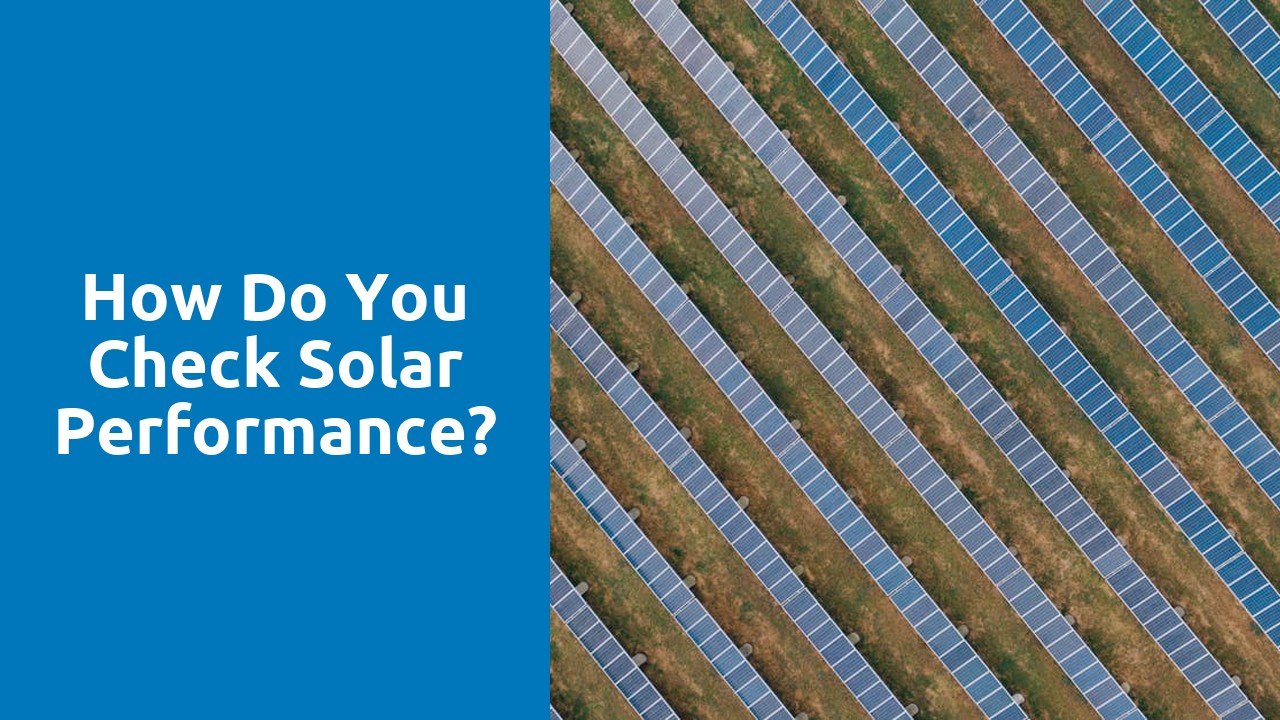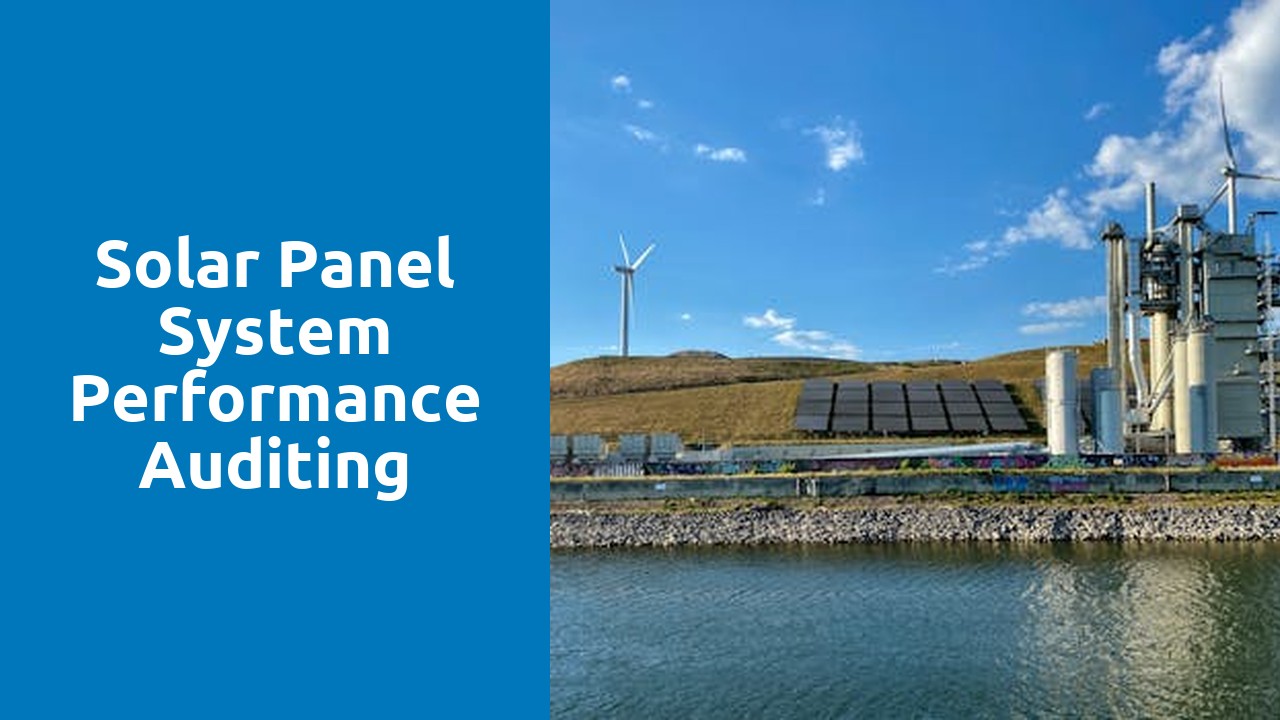
Reviewing Solar Panel Angles
Reviewing the angles of solar panels is a crucial aspect of ensuring optimal performance of a solar panel system. Correct angling of the panels towards the sun allows for maximum sunlight exposure, which directly impacts the energy generation capability of the system. An incorrect angle can lead to decreased efficiency and overall output of the solar panel system. Hence, regular assessment and adjustment of panel angles are essential to maintain peak performance levels.
Solar Panel System Performance Auditing involves reviewing and adjusting the tilt and orientation of solar panels to align with the sun's path throughout the day and across different seasons. By optimising the angles of the panels, solar energy absorption is maximised, leading to increased energy production. Installers and maintenance professionals typically use solar angle calculators to determine the best positioning for panels based on the system's geographic location and specific requirements. Regular monitoring and adjustment of panel angles can significantly enhance the overall efficiency and output of a solar panel system.
Impact of panel placement on energy generation
Optimising the placement of solar panels is crucial for maximising energy generation. A proper understanding of how the angle of the panels affects sunlight absorption is imperative for enhancing solar panel performance. By adjusting the angle of the panels according to the geographical location and sunlight trajectory, the efficiency of the solar panel system can be significantly improved. Solar Panel System Performance Auditing necessitates a meticulous evaluation of the panel placement to ensure that the panels are positioned in a manner that enables them to capture the maximum amount of sunlight throughout the day.
Moreover, the impact of potential obstructions such as trees, buildings, or shadows must not be underestimated. These obstructions can cast shadows on the panels, reducing their capacity to generate electricity. As part of Solar Panel System Performance Auditing, it is essential to monitor the surroundings of the panels to identify any obstacles that may hinder sunlight exposure. By carefully considering the impact of panel placement on energy generation and alleviating any potential obstructions, solar panel performance can be significantly enhanced.
Inspecting Solar Panel Condition
Inspecting the condition of your solar panels is a crucial aspect of maintaining and optimizing your Solar Panel System Performance Auditing. Regular visual inspections can help identify any signs of wear and tear, ensuring that your panels are operating efficiently.
When inspecting your solar panels, keep an eye out for any physical damage such as cracks, scratches, or discolouration on the surface. These could indicate potential issues that may affect the overall performance of your system. Additionally, make sure to check the frames and mounts for any signs of rust or corrosion, as this can weaken the structure of the panels over time. Regular inspections will help you catch these issues early on and prevent further damage to your solar panel system.
Identifying signs of wear and tear
When assessing the condition of a solar panel, it is crucial to be vigilant in spotting any signs of wear and tear. This vigilance ensures that the panels remain efficient and do not face any potential malfunctions that could hinder their performance. Regular inspection is vital to maintain optimal Solar Panel System Performance Auditing. Signs of wear and tear can include cracks or discolouration on the surface of the panels, which may indicate damage from environmental factors such as hail or excessive heat exposure.
Additionally, be on the lookout for any signs of corrosion on the wiring or framing of the solar panels. Corrosion can negatively impact the performance of the panels and pose safety hazards, so it is important to address any such issues promptly. By identifying and addressing signs of wear and tear early on, you can ensure that your solar panels continue to operate efficiently and effectively, maximizing their lifespan and energy generation capabilities.
Testing Solar Panel Connections
When assessing the efficiency of a solar panel system, checking the integrity of the connections is a crucial step in the process. Ensuring that the electrical connections are secure is essential for the optimal performance of the system. Loose or damaged connections can lead to power loss and potential safety hazards. As part of a comprehensive Solar Panel System Performance Auditing, examining the connections thoroughly is imperative.
Inspect the wiring and junction boxes for any signs of wear, corrosion, or damage. The connections should be tight and free of any visible issues. In addition, verify that the wiring is properly insulated and that there are no exposed conductors. By meticulously evaluating the connections as part of the Solar Panel System Performance Auditing process, you can help maintain the functionality and longevity of the solar panel system.
Ensuring secure electrical connections
Ensuring secure electrical connections is a crucial step in maintaining the efficiency and safety of a solar panel system. Loose or faulty connections can lead to decreased energy production and potential safety hazards. When conducting a Solar Panel System Performance Auditing, it is vital to carefully inspect all electrical connections to guarantee they are properly secured and free of any damage or corrosion.
Regularly checking and tightening electrical connections is essential for preventing any interruptions in the flow of electricity within the solar panel system. If connections are loose, it can lead to voltage drops, overheating, or even electrical fires. By incorporating a thorough inspection of the electrical connections into the routine maintenance of the solar panel system, individuals can ensure optimal performance and longevity of their solar energy system.
FAQS
What factors should I consider when reviewing solar panel angles?
When reviewing solar panel angles, it is important to consider the tilt angle and orientation towards the sun to optimize energy generation.
How does the placement of solar panels impact energy generation?
The placement of solar panels, such as facing north in the Southern Hemisphere, can significantly impact energy generation by maximizing sun exposure throughout the day.
What are the signs of wear and tear to look out for when inspecting solar panels?
Signs of wear and tear on solar panels may include cracks, discolouration, or delamination, which can affect the performance and efficiency of the panels.
Why is it important to test solar panel connections?
Testing solar panel connections is crucial to ensure secure electrical connections, which can prevent energy loss and potential safety hazards.
How can I ensure the security of electrical connections in my solar panel system?
To ensure the security of electrical connections in a solar panel system, regularly inspect and tighten connections, and consider consulting a professional for maintenance and repairs.
